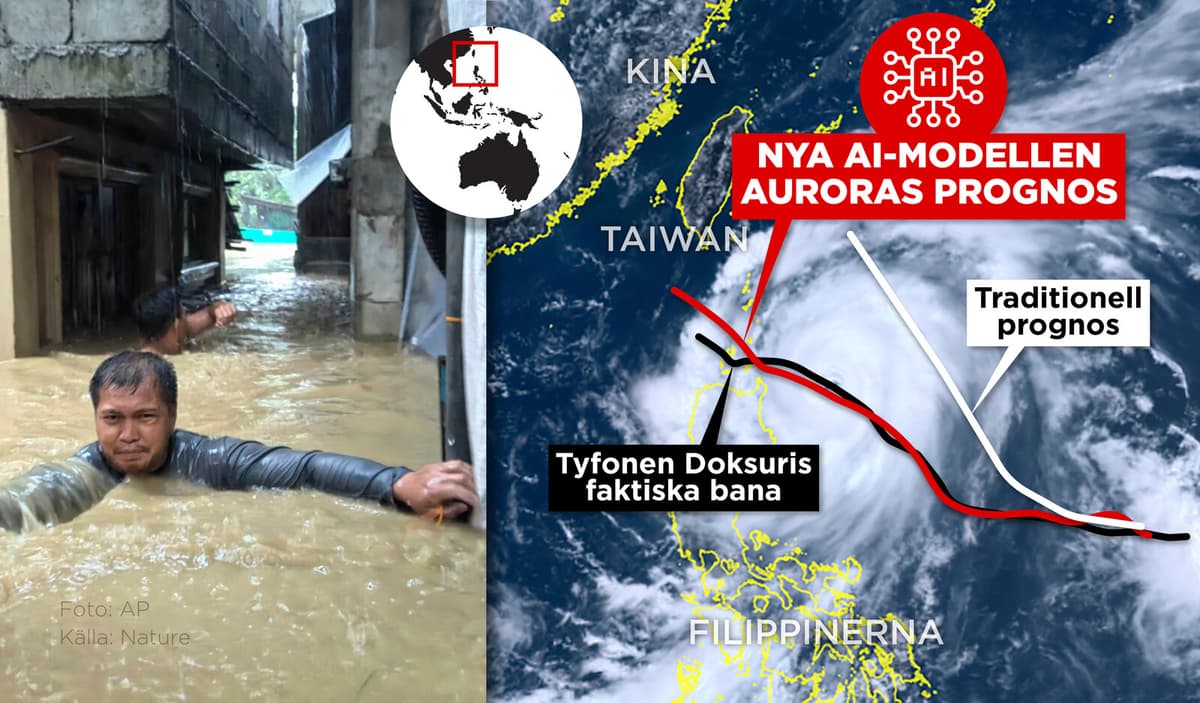Microsoft has developed a model that can be good at most things when it comes to different environmental forecasts.
Google and Nvidia have made models for weather. We wanted to go a step further, says Paris Perdikaris, lecturer in mechanical engineering and applied mechanics at the University of Pennsylvania, and one of the researchers behind the study.
The result is called Aurora, which is a basic model that can be adapted to calculate air quality, wave heights, sandstorms, and hurricanes. It builds on traditional models to understand, simulate, and predict, for example, weather.
The AI model has been trained on a large collection of geophysical data, over one million hours, says Perdikaris.
Like a sailor
The data has then been compared with results and weather stations and learned to recognize different patterns.
You can see it as an experienced sailor who has learned to predict a storm by looking at the clouds and their previous experience, rather than calculating equations.
When it comes to, for example, how a tropical cyclone would move in the next five days, Aurora was better than seven traditional centers, and the model was often more accurate than traditional models when it comes to wave heights and weather, according to a study published in Nature.
Today, expensive, powerful supercomputers are used to predict the weather based on physics.
Aurora can be up to 5,000 times faster and can actually be run from a regular consumer computer, instead of requiring supercomputers. So I also see great benefits in terms of speed and accuracy, in scenarios where quick decisions need to be made.
Does not understand why
Aurora, however, does not understand physics. It can, like the sailor, understand what the weather will be like, but not why.
If it encounters something that does not match well with the historical data that the system has previously seen, it can make mistakes.
We will always need a human expert who can recognize if a forecast is physically logical and who can make decisions about the official forecast, he says.
Supercomputers will still be needed, believes Paris Perdikaris. Among other things, they are used to tell what conditions prevail right now, which is needed for the AI to be able to look forward.
We are not there yet that AI can do it on its own. It relies heavily on existing models and their data to continue to train and adapt. But in a decade, maybe it will look different, he says.
Gustav Sjöholm/TT
Fact: Aurora
TT
Aurora is a basic model described as a large-scale AI model trained on a wide range and amount of data.
It consists of an encoder that converts data into a 3D representation, a processor that develops the model forward in time, and a decoder that then translates the representation into physical predictions.
The fact that the model has been trained on a wide variety makes it possible to use it for several different purposes, by specializing it with the help of a limited amount of additional specialized data. It can, apart from weather, concern calculating typhoons, sandstorms, and how high wave heights are expected to be, and in which direction they will move.
Aurora is currently used at Microsoft's AI research department Azure, and has also been implemented in the company's weather forecasting service.
The study is published in the journal Nature.





